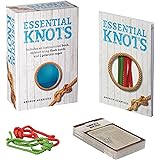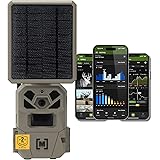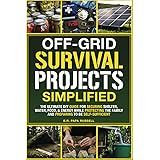The stark reality of wilderness survival often comes down to fundamental human needs: shelter, water, and food. The accompanying video, with its immersive sounds of splashing water, crunching footsteps, and the methodical preparation of natural foods, offers a visceral glimpse into the ancient art of survival cooking in a forest environment. It serves as a compelling reminder of our innate capability to thrive even in the absence of modern conveniences, highlighting the raw process of procuring and preparing sustenance directly from the wild.
While the visual demonstration speaks volumes through action, a deeper dive into the methodologies and principles behind such skills can equip aspiring survivalists and seasoned bushcraft practitioners alike. Understanding not just *how* to perform these tasks, but *why* certain approaches are vital, transforms simple actions into a robust skillset. This exploration goes beyond mere activity; it delves into the philosophy of self-reliance and the profound connection one can forge with the natural world.
The Art of Wild Food Procurement
Securing food in a wilderness scenario requires a nuanced understanding of ecology, seasonality, and responsible harvesting. It’s a game of observation, patience, and acquired knowledge, fundamentally different from a trip to the local grocery store. Imagine if your immediate surroundings became your pantry; every plant, every water source, and every animal a potential resource.
Foraging Essentials: Identifying Edible Bounty
The sounds of digging and peeling in the video likely hint at the excavation and preparation of subterranean food sources, such as roots, tubers, or corms. Successful foraging, however, is far more complex than simply digging; it demands precise identification to avoid toxic lookalikes. Enthusiasts often spend years learning to distinguish between edible wild plants, fungi, and berries, understanding their growth cycles and preferred habitats.
For example, wild carrots or parsnips can be mistaken for highly poisonous hemlock species. Mastery involves learning botanical indicators, such as leaf shape, flower structure, and root characteristics. Carrying a trusted field guide and cross-referencing multiple sources are non-negotiable practices. Furthermore, sustainable harvesting practices are crucial; never take more than 10-20% of a patch, ensuring future growth and ecological balance.
Primitive Hunting and Fishing: Securing Protein
The sound of water splashing suggests active fishing, a vital method for acquiring protein. In a survival context, primitive fishing techniques can range from hand-lining with improvised hooks to constructing fish traps or even spearfishing in clear, shallow waters. Contrastingly, land-based game procurement often involves crafting snares and traps, a skill requiring intimate knowledge of animal behavior, tracking, and local game trails.
Ethical considerations are paramount, even in survival. The goal is efficient, humane harvesting. Processing wild game, as indicated by the chopping sounds, involves skinning, gutting, and butchering. This ensures maximum yield of edible parts and prepares the animal for cooking, or even for short-term preservation such as drying or smoking. Understanding basic animal anatomy expedites this critical step, minimizing waste and maximizing energy return.
Mastering Primitive Culinary Techniques
Once food has been procured, the next challenge is transforming it into a nutritious and safe meal. This is where primitive cooking techniques shine, allowing raw ingredients to be rendered palatable and digestible without modern kitchen equipment. It’s not just about applying heat; it’s about controlled application of heat, flavor enhancement, and nutritional retention.
Firecraft and Heat Management
The crackling and sizzling noises signify the heart of survival cooking: firecraft. Building and maintaining a cooking fire goes beyond simply striking a match. Different types of fires serve different purposes. A small, hot fire is ideal for boiling water or cooking small game quickly, while a larger, long-burning fire can produce coals suitable for pit cooking or slow roasting. Mastering heat management—understanding radiant, conductive, and convective heat—is crucial for preventing scorching or undercooking.
Imagine if your only heat source was a few logs and some tinder. Techniques like cooking directly on hot coals (ash cooking), suspending food over flames on a spit, or baking in a makeshift earth oven become indispensable. These methods not only cook food but can also impart unique flavors, like the smoky essence of spit-roasted fish or the earthy taste of root vegetables baked in hot ashes.
Food Preparation and Preservation in the Field
The sounds of chopping and chewing reflect the final stages: preparing the meal and enjoying its fruits. Field preparation of wild edibles often involves simple yet effective techniques. Wild herbs and spices, if correctly identified, can significantly enhance flavor, turning a bland meal into a satisfying one. Beyond immediate consumption, understanding basic preservation methods can extend the utility of a successful hunt or forage.
For instance, thin strips of meat or fish can be air-dried or lightly smoked over a slow fire, dramatically increasing their shelf life. This practice, often overlooked in the urgency of immediate hunger, can be a game-changer for sustained survival. Similarly, boiling foraged nuts or seeds can render them more digestible, extracting valuable nutrients. Every step, from initial procurement to the final bite, is an interconnected chain of survival knowledge.
Beyond Sustenance: Psychological and Practical Benefits
While the immediate goal of survival cooking in a forest is to nourish the body, the broader benefits extend much further. Successfully navigating the complexities of wild food procurement and primitive cooking instills a profound sense of accomplishment and resilience. It reinforces problem-solving abilities and fosters a deeper respect for the natural world, moving beyond casual observation to active participation.
The confidence gained from knowing one can provide for oneself, even in challenging circumstances, translates into greater overall self-reliance. This comprehensive understanding of bushcraft skills, encompassing everything from identifying an edible plant to crafting a rudimentary cooking setup, builds mental fortitude. These are not merely historical curiosities; they are empowering capabilities that bridge the gap between human ingenuity and environmental resourcefulness.
Ultimately, embracing the skills involved in survival cooking in a forest means acquiring invaluable knowledge for any outdoor enthusiast or preparedness-minded individual. From understanding natural food sources and ethical foraging practices to mastering primitive cooking over an open fire, these ancient techniques offer a robust foundation for self-sufficiency in the wild.











